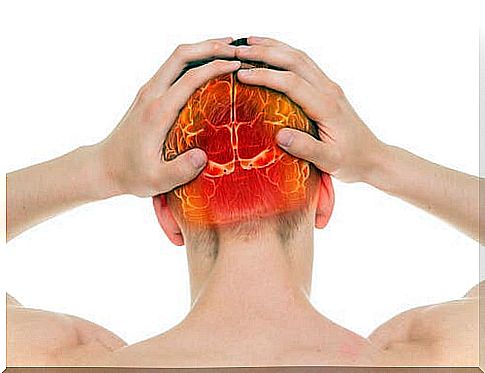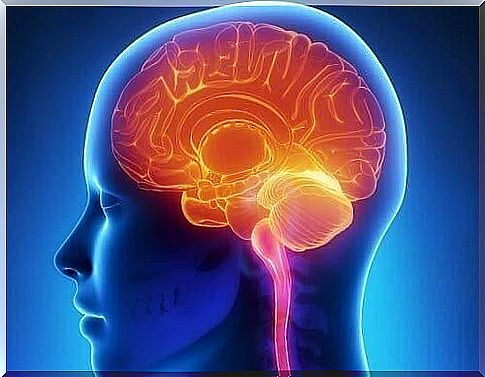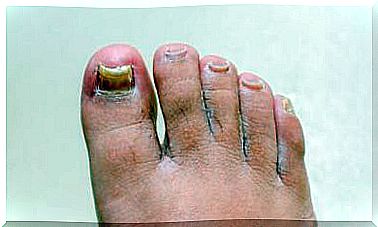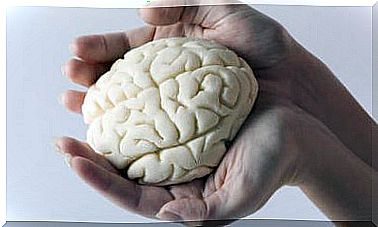Can The Brain Feel Pain?
Have you ever wondered when you have a headache what really hurts you and if the brain can feel pain? The answer is this: this organ interprets painful stimuli, but it is not able to feel pain. Find out more here.

The term headache is the technical term for headache. But the head has many structures including the brain. Can the brain feel pain? What hurts us when we have a headache?
The term “head” includes the bones of the skull, the skin and muscles that cover the entire brain, as well as the venous and nerve structures that circulate there. The brain is another organ within the brain : it only represents a portion of the head.
There are many causes of headaches. Some headaches are trivial and are the result of a little fatigue or stress. Other times, the headache indicates a serious illness such as a stroke.
To know whether the brain can feel pain, it is necessary to know whether or not there are pain receptors in the brain tissue. Areas of the body that do not have these receptors are unable to generate pain.
The brain has no pain receptors
Pain receptors are called nociceptors. These are sensory structures. When a stimulus activates a nociceptor, it can generate a painful sensation.
Nociceptors are found in many tissues, but not in the brain. When these receptors are stimulated, they transmit the pain signal to the brain via the spinal cord. A feeling of heat can be a stimulus, for example.
Some nociceptors are found outside the body, namely on the skin, while others are found inside the body, in certain organs. Some mucous membranes and tissues also have these receptors. This is for example the case with muscle tissue.
In short, the brain cannot feel pain. It receives the information sent by the nociceptors which are distributed throughout the body and it interprets this information, but the pain is never cerebral. On the other hand, neighboring structures have nociceptors. This is the case with the meninges, for example.
Lacking pain receptors, the brain can be operated on after local anesthesia, as is the case with many neurosurgeries. The surgeon opens the skullcap and works on the brain of the patient who is awake; the surgeon’s interventions do not generate pain there.

The brain can’t feel pain, but it interprets it
As we explained just now, the brain cannot feel pain, but it is nevertheless responsible for interpreting the pain signals it receives from nociceptors distributed throughout the body. For some neurologists, it is correct to say that the brain generates pain, because it is this organ that tells us if something is hurting us.
When a nociceptor detects a physical, thermal, chemical, or pressure change that can be harmful, it alerts the brain. Information from the receptor travels through the spinal cord and is interpreted in brain tissue.
The brain collects the data, then it emits a response, which is conditioned by our experience, namely by what we have experienced and what we have learned. Depending on its interpretation, an order will follow. If it detects a dangerous pain, it is possible that this order consists in moving away the part of the body affected by the factor responsible for the stimulus, or to move, jump, run, or to hold a little longer.
Some people train to resist pain. This is the case with boxers, for example. The hits they receive are recorded by the brain and the boxer thus gains experience. Faced with subsequent blows, the response will therefore no longer be the same, because the brain will have accumulated information that will allow it to make other decisions.
Let us not forget that some pains go beyond the experience. Pain is the body’s defense mechanism to protect us from dangers that can harm our health. A good pain recognition system is what keeps us alive as a species.
So what does a headache mean?

Now that we know that the brain cannot hurt, it is legitimate to wonder what causes pain in the head. The answer lies with the other structures of the skull.
The headache can develop in the skin of the head, in the meninges, or in the arteries of the skull. With cervical contracture, the muscles of the neck can also be responsible for a headache. The brain will interpret the signals from these structures and decide whether or not it is pain.
Blood circulation is a common cause of migraine headaches. When circulation is impaired in the arteries or veins in the head, nociceptors in the blood vessels alert the brain. That is why some medicines for treating migraines are based on changing vasoconstriction.
The brain cannot feel pain, but we can
Just because the brain can’t feel pain doesn’t mean we can’t feel it. On the contrary, the brain tissue connects us with the outside via pain perception and interprets our internal environment via the nociceptors of the organs. In short, the brain cannot feel pain, but we as a whole can.









